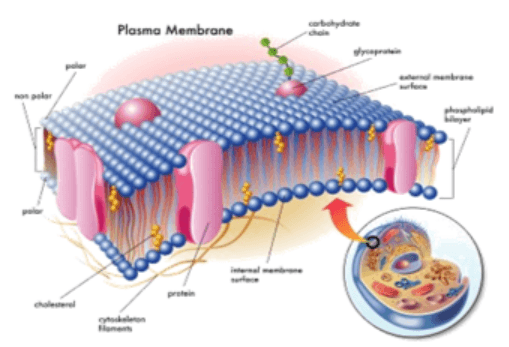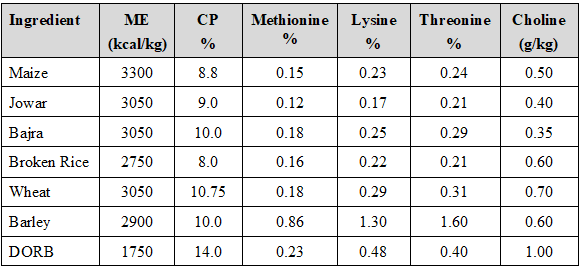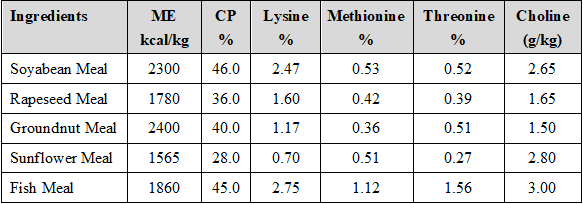Crafting a Symphony of Poultry Health and Production with Choline
Published: January 26, 2024
By: Ankur Gupta / Natural Remedy
CHOLINE
Choline, a B-complex vitamin also known as vitamin B4, has been revived as a requisite “feed additive” in poultry.
Choline is a lipotropic factor that helps in the mobilization of fat and prevents fatty degeneration. Apart from this, also play many important roles in the body of the birds.
The metabolic needs for Choline are supplemented in 2 ways:
1. Dietary Choline
2. Choline synthesis in animals
Although choline can be synthesized in birds, the extent to which is minimal, and therefore, to maximize growth or performance, the diet must supply additional Choline. NRC, 1994)
Free choline makes up only a small proportion of the total choline found in biological materials. More common forms include.
• Lecithin
• Acetylcholine
Choline in biological materials exists almost exclusively as a phospholipid in the form of phosphatidylcholine (PC), also commonly referred to as lecithin. Other important intermediaries of choline metabolism include phosphatidylethanolamine (PE) and sphingomyelin.
However, the dietary bioavailability of choline is considered ‘moderate’ (Whitehead & Portsmouth, 1989; Baker, 1995)
Nutrient bioavailability to poultry depends mainly on two factors:
(1) stability in premixes, diets, and supplements;
(2) utilization efficiency
Bioavailability from soyabean meal held to be an excellent choline source for non-ruminants is at 60–75 %, considerably higher than from most other feeds, and is as low as 24 % from rapeseed meal (Baker, 1995; Schutte, 1999)


HISTORY:
Choline was first isolated by Strecker in 1862 from the hog bile.
CHEMICAL STRUCTURE:
The structure of choline was established by Bayer in 1867

PHYSICAL CHARACTERISTICS:
Pure Choline is a viscid, strongly alkaline liquid. Commonly a compound of choline as Choline Chloride is used in poultry feed which is soluble in water and alcohol. Commercial preparations of Choline Chloride are 50-60% aqueous solution mixed with a dry carrier.
NATURAL SOURCES OF CHOLINE:
Fish meal, soya bean meal, yeast, etc. are good sources of choline. Most oil seeds, such as peanuts, cottonseed, and soybeans, are good sources of choline.
FUNCTIONS OF CHOLINE CHLORIDE:
-Synthesis of acetylcholine.
-Acts as a methyl donor for the synthesis of methionine in the body.
-Plays an important role in the mobilization of fat.
1. Prevents fatty liver syndrome.
2. Source of labile methyl groups
3. Synthesizes neurotransmitter acetylcholine.
4. Plasma membrane Structural component
5. Prevents haemorrhagic Kidney lesions.
6. Prevents Perosis in chicks.
DEFICIENCY:
-Poor growth
-Perosis – characterized by a peculiar posture of the bird
-Fatty degeneration of liver and kidneys.
REQUIREMENT:
Depends upon the availability of Folic acid, Vitamin B12, and methionine levels in feed. Insufficiency of the aforesaid may increase the requirement.
The suggested practical requirement is furnished below:
Commercial Broiler:
Choline mg/Kg. (added) - 900.00
Choline kg/ton of feed - 0.9 to 1.5 Kg
(Depending on ether extract % in feed)
Commercial Layers:
Choline mg/Kg. (added)
(a) Chick mash - 600.00
(b) Grower mash - 250.00
(c) Layer mash - 500.00
LIMITATIONS OF SYNTHETIC CHOLINE CHLORIDE:
The bio-efficiency of synthetic choline chloride may get hampered due to its interaction with feed ingredients/additives, gut infection, liver dysfunction, deficiency of phospholipids, etc. Trimethylamine (TMA) is an essential raw material to produce Choline. This TMA needs to be neutralized in the finished product. If not neutralized properly, it causes undesirable effects as it is corrosive in action. It causes sloughing of the intestinal mucosa and results in malabsorption.
Can be summarized as.
· Synthetic Choline Chloride should contain less than 250 ppm of TMA which is Nephrotoxic & Hepatotoxic
· It should be free from PCB (Poly Chlorinated Biphenyls)
· It should be free from radioactive elements ie Cs - 137
· Moisture level should be less than 3%
· It should be Dioxin free.
· Mostly base is Corn Cobb hence it should be free from GMO.
· Corn Cobb is a rich source of Mycotoxins & Bacterial toxins.
· Heavy metals (Pb, Cd, As & Hg) should be less than 12 ppm.
· Interacts with Vitamins and ionophores.
· Being a quaternary base, poorly absorbed by the G.I. tract.
· Corrosive nature, not a user friendly as well damages machinery and equipment
· Obnoxious smell is a practical concern in processing units and feed mills.
THE STOICHIOMETRY OF CHOLINE CHLORIDE
• Dry Choline Chloride (60% C.C.)
– 1 Kg of 60% dry choline chloride contains min. 450 g of Choline.
– i.e., 1 Kg of 60% dry choline chloride has 45% of Choline.
• Aqueous Choline Chloride (75% C.C.)
– 1 Kg of 75% aqueous choline chloride contains min. 560 g of Choline.
– i.e., 1 Kg of 75% aq. choline chloride has 56% of Choline.
CHOLINE CONTENT OF MAJOR ENERGY SOURCE FEED INGREDIENTS

CHOLINE CONTENT OF MAJOR PROTEIN SOURCE FEED INGREDIENTS

Choline content in Rice DDGS with protein up to 38-44% is around 1750-1850 mg/Kg while with Rice DDGS in the pure form up to 53-55% protein ranges from 2500-2700 mg/Kg.
CONCLUSION
In conclusion, choline, a vital B-complex vitamin, is essential as a "feed additive" in poultry for fat mobilization and prevention of fatty degeneration. It plays multiple crucial roles in avian metabolism, with dietary choline supplementation being necessary for optimal growth. Natural sources include fish meal, soybean meal, and yeast. Choline chloride, commonly used in poultry feed, is instrumental in synthesizing acetylcholine, preventing fatty liver syndrome, and serving as a source of labile methyl groups. Deficiency leads to poor growth, perosis, and fatty degeneration. Synthetic choline chloride has limitations, including potential toxicity, corrosiveness, and undesirable interactions. The stoichiometry and choline content in various feed ingredients underscore its importance in poultry nutrition.
Related topics:
Related Questions
Fish meal, soya bean meal, yeast, etc. are good sources of choline. Most oil seeds, such as peanuts, cottonseed, and soybeans, are good sources of choline.
Choline, a vital B-complex vitamin, is essential as a 'feed additive' in poultry for fat mobilization and prevention of fatty degeneration. It plays multiple crucial roles in avian metabolism, with dietary choline supplementation being necessary for optimal growth.
Authors:
Natural Remedies Private Limited
Recommend
Comment
Share

Would you like to discuss another topic? Create a new post to engage with experts in the community.
Featured users in Poultry Industry

Shivaram Rao
Pilgrim´s
PhD Director Principal de Nutrición y Servicios Técnicos de Pilgrim’s Pride Corporation
United States
United States






